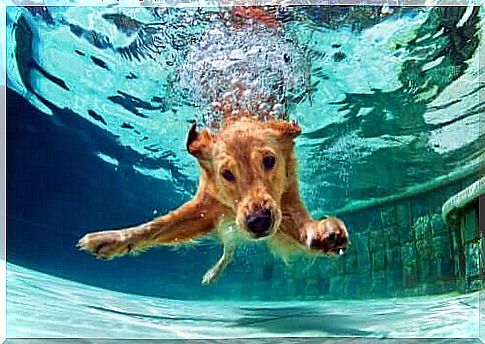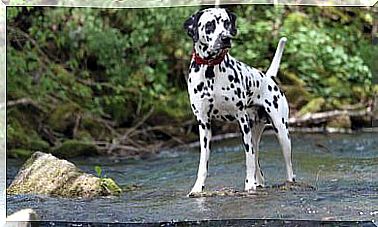Swimming For Dogs: Everything You Need To Know

Swimming is a very healthy activity for dogs too. Because swimming is a very effective workout and helps you cool down during the hot season.
This type of exercise has many benefits for your pet. However, keep in mind that not all dogs are equally ready to swim . Therefore, this should be a gradual process in which the animal combines the activity with an enjoyable experience. In today’s article we want to show you some of the benefits associated with this activity.
Swimming: These are the benefits it offers your dog
1. Swimming promotes weight loss
Like any other physical activity, swimming can help your dog lose weight. Thanks to the buoyancy of most living things in the water, this activity also has no effect on the animal’s osteoarticular system. The bones and joints do not have to bear the weight of the animal as they do on land. As a result, there is no tension or excessive stress on bones and joints.
2. Swimming increases muscle tone
Water has a greater resistance than air. As a result, your dog will have to work more with their muscles to perform the same movement. This is great because it increases his muscle tone. For this reason, intense swimming is one of the five forms of exercise that require the most energy and generate the most muscle.
3. Swimming improves your dog’s respiratory and cardiovascular systems
Your dog can practice this form of exercise at low or moderate intensity. In addition, his respiratory and cardiovascular capacity improves over time. Continuous exertion strengthens lung capacity. In addition, your dog learns to better control his breathing rhythm.
4. The therapeutic benefits of swimming for dogs
This activity is also recommended for alleviating the effects of some musculoskeletal disorders and for recovery from various illnesses, such as:
- arthritis
- Paralysis
- Muscle degeneration
- Cruciate ligament tear
- Hip dysplasia

What is hydrotherapy?
Hydrotherapy is a treatment performed through passive, assisted, or active movements while the animal is underwater.
- Passive movements require the assistance of a therapist who will help the animal create resistance that will allow it to strengthen its muscles.
- Active movements are self-explanatory, the dog performs them independently.
Dogs perform their hydrotherapy exercises in a special bathtub that gradually fills with water. The regulation of the water flow and the amount of water takes place according to the needs of each individual patient. In addition, an underwater belt can be used to facilitate the movement of the animals.
In addition, the temperature of the water can be regulated in some pools and sometimes there are even additional air or water jets. In this way, the exercises already performed can be supplemented with the health benefits of thermotherapy and hydromassage (other techniques used in rehabilitation).
Accessories for going swimming with your dog
Dogs can exercise in both natural waters and swimming pools if you have one near you that allows dogs (you should check local regulations for that). Of course, you have to keep an eye on your dog while swimming. In fact, there are some accessories on the market (such as life jackets for dogs) that make swimming easier for them.
On the one hand, life jackets increase the animal’s buoyancy and make swimming easier. They also increase the animal’s visibility in the water.
Swimming has many benefits for dogs, and many breeds love it. As you can see, it’s the perfect way to give your dog a good time, have fun, and bond with your pet. However, you should note that if your dog is afraid of the water, you will need to gradually get used to it. You should also always work with positive reinforcement until your pet decides to go into the water and stay there.
Finally, it is important to remember that this type of activity has certain contraindications. Therefore, you should contact your veterinarian to find out if the animal has any medical condition where swimming or hydrotherapy is not a good idea.









